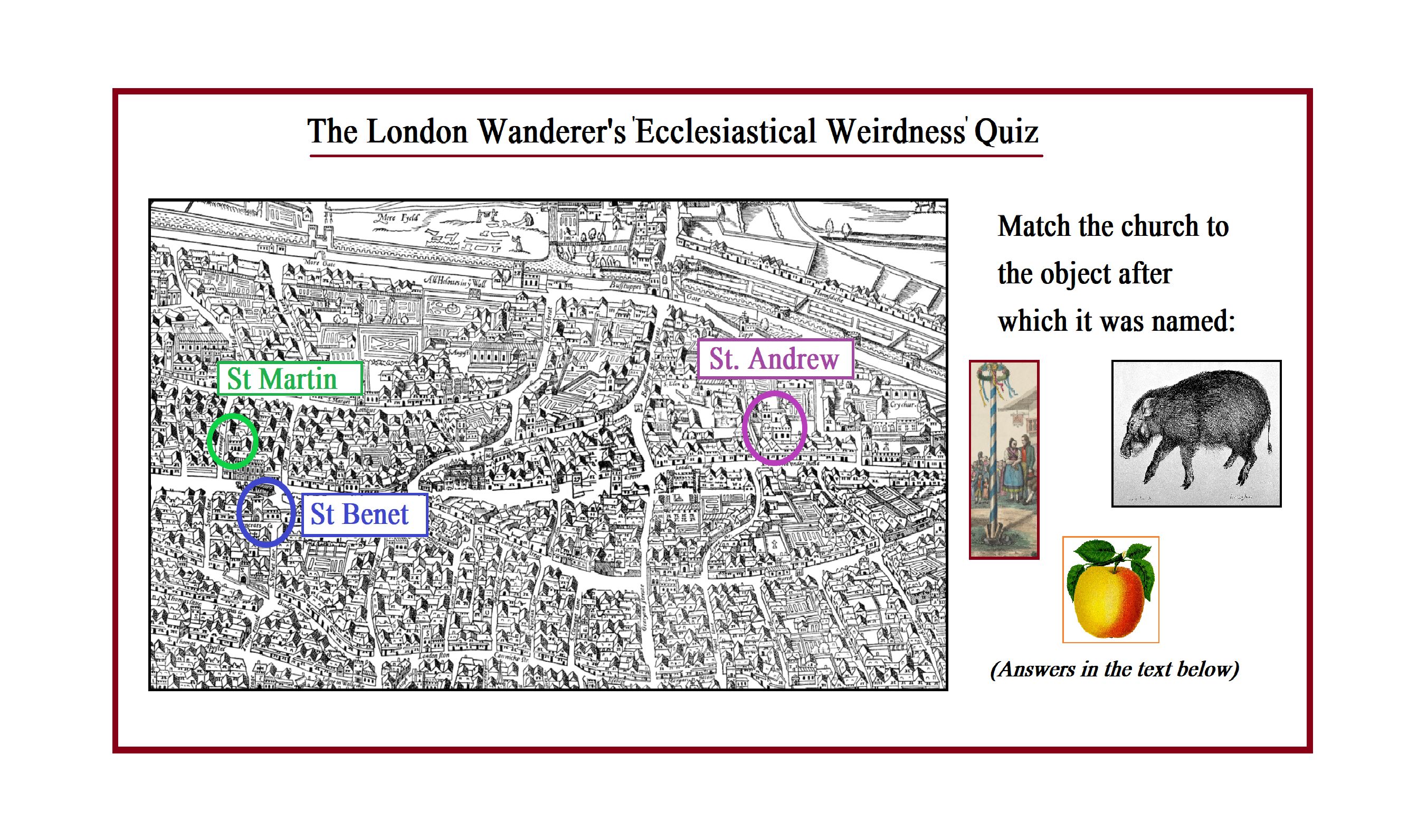
Are you setting up a religious establishment and not sure which saint to dedicate it to? Or have you decided on a saint but now realise there are six other churches within a stone’s throw dedicated to the same one? Help is at hand. Learn from the citizens of the City of London who, since Saxon times, have been using names that differentiate consecrated locations in ways unique, memorable and sometimes downright bizarre. This was vital in days of yore, when many people couldn’t read addresses and churches were packed into the square mile like so many sardines.
In this post I take a look at a small sample of those City churches and identify the techniques – some more successful than others – that Londoners used to tell them apart. Unless otherwise stated, the churches discussed still exist in some form, and for some of these I’ve even taken the liberty of suggesting updated names to take into account current circumstances.
Technique 1: Use a nearby structure or geographical feature
This first ploy produces by far the most memorable and varied results. Aside from the generations of schoolboys set sniggering, it works well for St. Andrew Undershaft, which took this memorable name from a colossal maypole that towered over the church until condemned by puritan folk for being heathen. St. Martin Pomaroy (destroyed 1666, not rebuilt) also successfully adopted the strategy, being named after a nearby apple orchard. This must have given the congregation pleasing visions of the Garden of Eden long after the City was covered in choking urban sprawl.
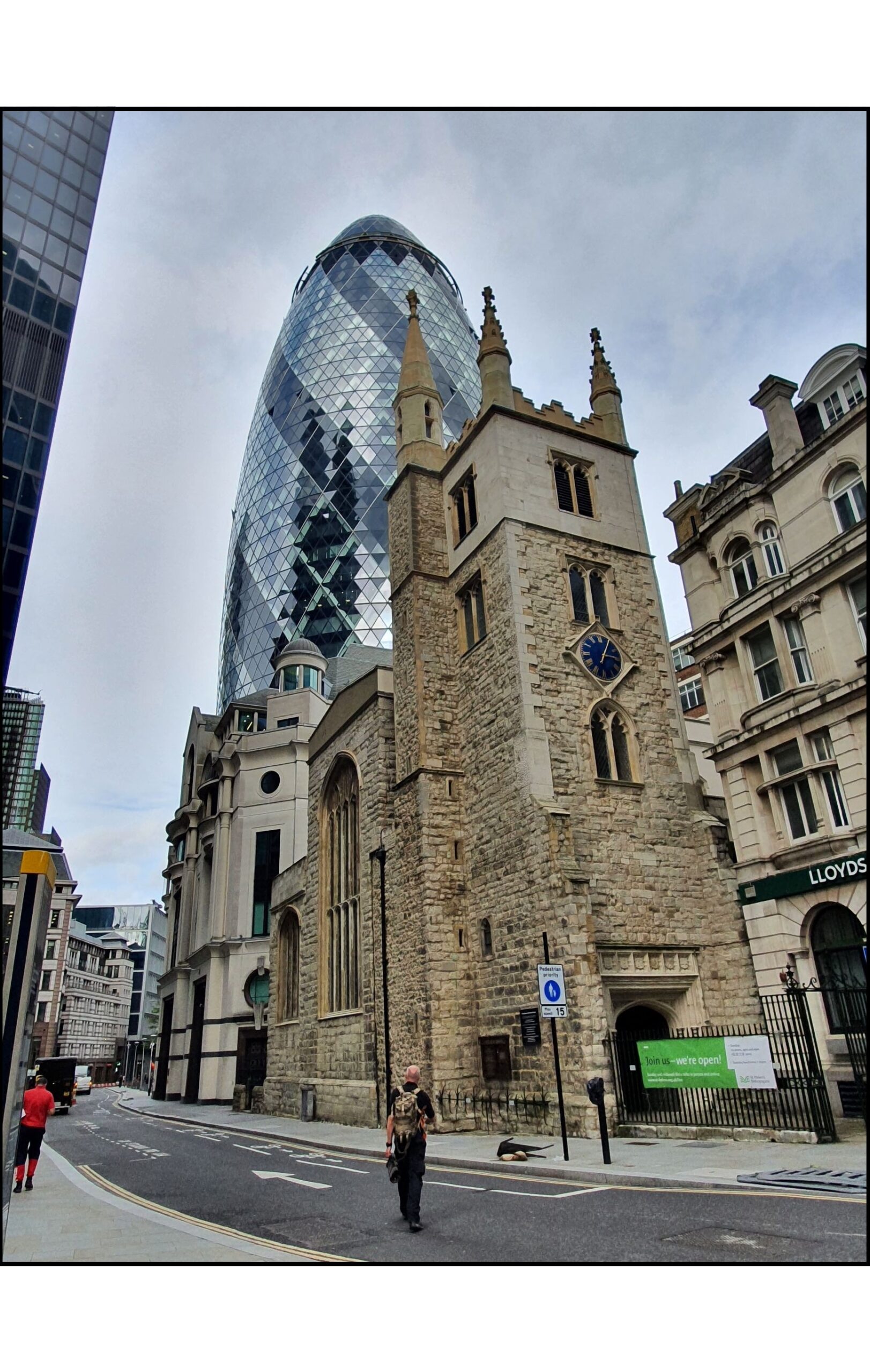
← St. Andrew Undershaft is, it seems, destined to be plagued by innuendo-laden neighbours. The maypole may be long gone but I doubt ‘St. Andrew Gherkin’ would stop schoolchildren from laughing.
St. Andrew by the Wardrobe might seem to be taking things a little left-field by referencing domestic furniture, but the King’s Wardrobe was a government department in the Blackfriars neighbourhood for more than 300 years, so it was probably as a good a local landmark as any. Besides which, nearby St. Anne’s had grabbed the obvious ‘Blackfriars’ epithet for its own use. Both the King’s Wardrobe and St. Anne’s Blackfriars are long gone, but St. Andrew is still ‘by the Wardrobe’.
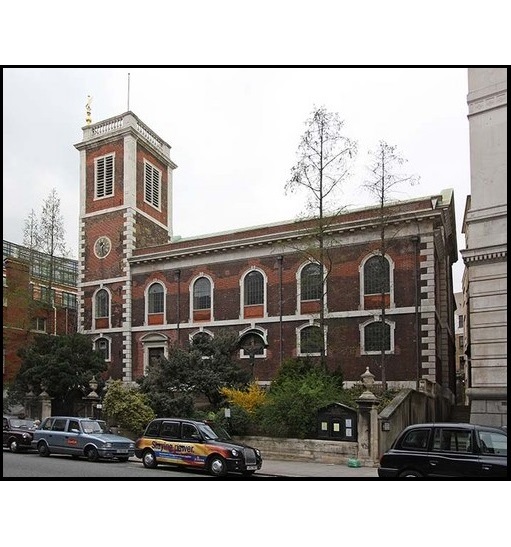
→ Not a storage cupboard in sight. St. Andrew should have been renamed ‘St. Andrew by the Site Previously Occupied by the Wardrobe’, although I admit that doesn’t exactly trip off the tongue.
On those rare occasions when your church is physically underneath another, the naming is done for you. Old St. Paul’s Cathedral was being extended in the 13th century and needed the space occupied by the Parish church of St. Faith’s. The congregation was banished to a subterranean chapel of the extended cathedral which became St. Faith’s under St. Paul. The chapel, along with the rest of old St. Paul’s, was lost in the Great Fire. A replacement St. Faith’s chapel was created in the crypt of Wren’s magnificent new St. Paul’s, but this wasn’t considered a parish church.
St. Nicholas Cole Abbey has been deceiving generations into thinking it is somehow abbey-related, which adds a certain lustre to an establishment. In fact, Cole Abbey is a corruption of Coldharbour, a common name for lodging houses in medieval times – so there was probably one nearby. The name doesn’t seem so grand in the light of this news, although it is preferable to ‘St. Nicholas by the B&B’.
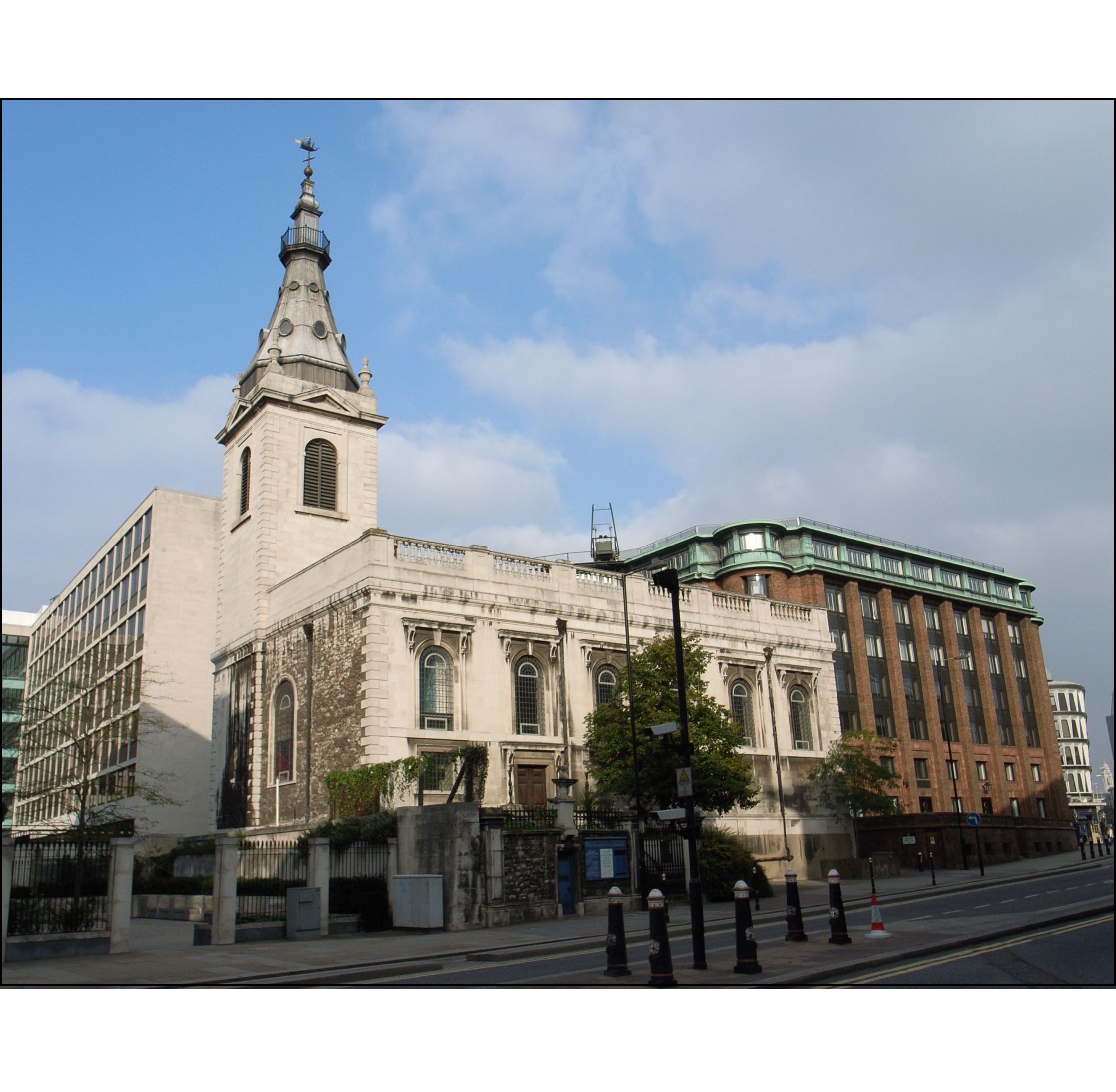
← There are no guesthouse signs visible near St. Nicholas Cole Abbey these days. The red-brick building beyond is the home of a well-known newspaper, but ‘St. Nicholas Financial Times’ would have the ring of an ill-judged sponsorship deal.
St. Swithin London Stone (remains demolished 1962) was named after a small lump of oolitic limestone, probably brought to London in Roman times, that – for unfathomable reasons – has been venerated by Londoners for generations and was set into the church’s wall. Sadly, this tediously unmemorable rock is still with us while the attractive and historic St. Swithin was gutted in the Blitz.
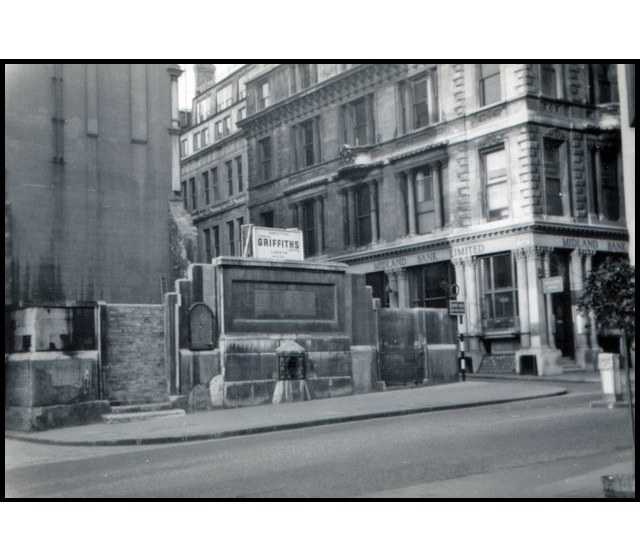
← Cannon Street 1962, and the remains of St. Swithin just prior to final clearance. The London Stone, set into the wall behind a grill, just above the pavement, was incorporated into later buildings, where it can still be seen today. If you visit, prepare to be underwhelmed.
Finally on this technique, a word of caution: Chose your geographical feature carefully to avoid adding to the confusion. St. Mary at Hill and St. Mary Abchurch, dedicated to the same St. Mary, both have names indicating that they are on a gradient (Abchurch means ‘Up church’), and the two sit barely 300 metres apart.
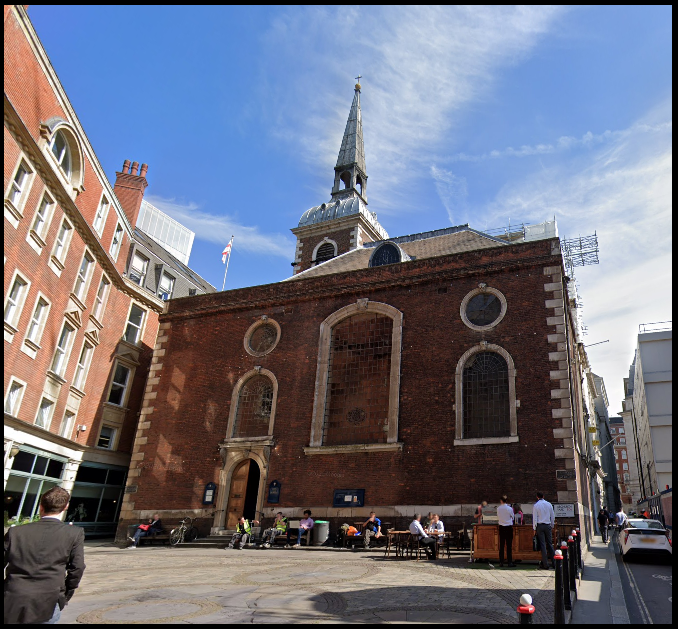
→ A church dedicated to St. Mary, located on a hill in the City
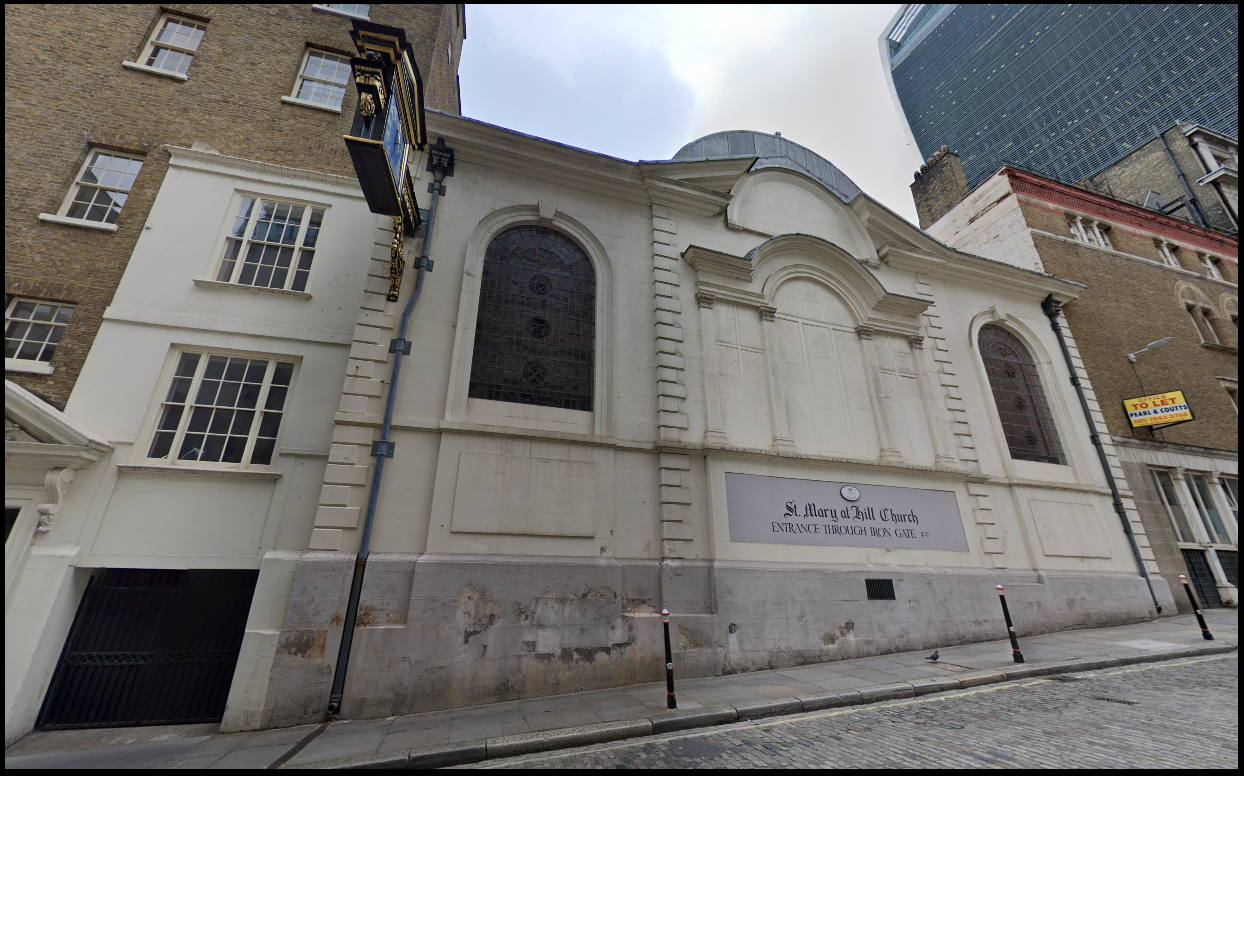
← A church within the City, sited on a hill, dedicated to St. Mary
Technique 2: Use a nearby street name
A technique that can be rather unimaginative. All Hallows Bread Street (demolished 1876) is typical of the breed, and St. Margaret New Fish Street Hill (destroyed 1666, not rebuilt) makes for an unpleasant mouthful. However, very occasionally it can result in breathtakingly picturesque titles. A good example is St. James Garlickhythe, which sounds almost poetic – a neat trick given that the street name in question is derived from a less-than-romantic dock facility.
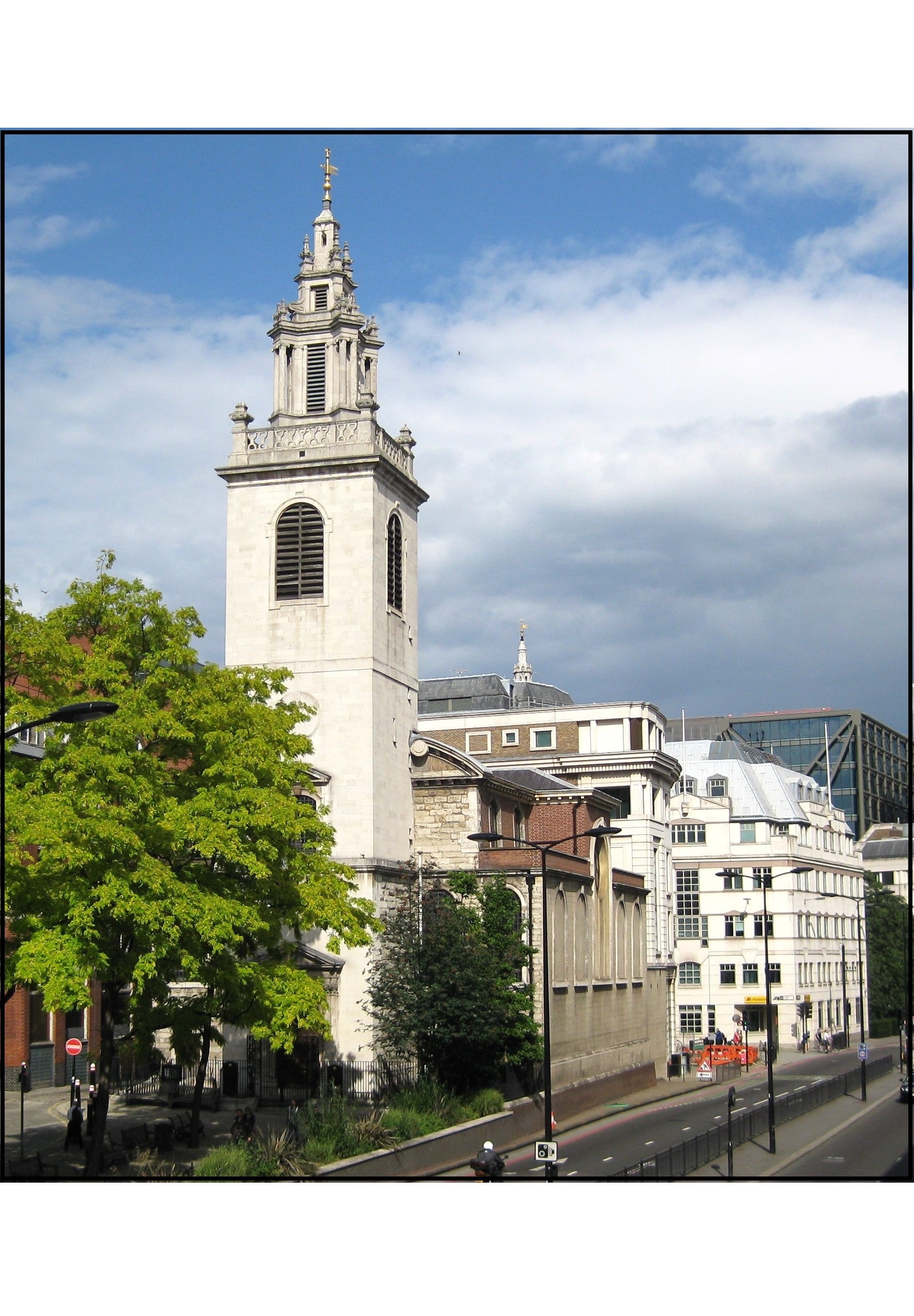
→ The name may be poetic, but garlic hasn’t been unloaded and sold anywhere close by for centuries and the church is stuck next to busy Upper Thames Street. ‘St. James Gridlock’ might be worth adopting as a new name.
Technique 3: Use an activity that goes on nearby
St. Margaret Pattens is not, as you might think, dedicated to some holy personage called Margaret Patten, but is instead positioned in an area once known for the manufacture of overshoes, or ‘pattens’, that helped Londoners keep their best shoes mud-free.
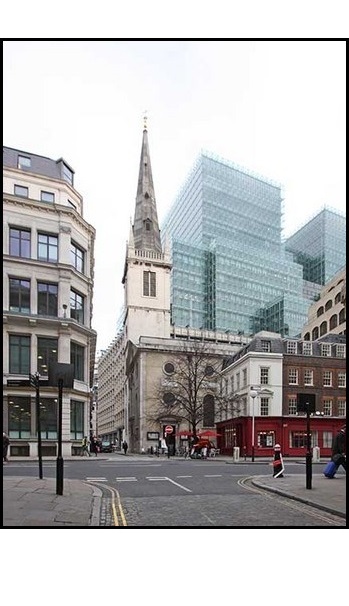
← No mud, so no need for pattens, so St. Margaret’s is probably in the market for a rename. Rood Lane would just produce misspelling and cause more laughter, but Plantation Lane, Eastcheap or the building behind, Plantation Place, could all provide inspiration.
Technique 4: Use an unspeakable activity that goes on nearby
This worked for St. Benet Sherehog, as the church dedicated to St. Benedict and named after castrated pigs sold nearby is still commemorated today by a blue plaque, 350 years after its destruction. Further west, St. Nicholas Shambles wasn’t named after a saint in need of a PA, but the nearby abattoir and butchers – explaining why a road that ran alongside the church was called Stinking Lane. St. Nicholas was a victim of reorganisations after the reformation, being demolished in 1547 and its parish merged with that of the more fragrant Christ Church Greyfriars, named after the Franciscan friars in their grey cloaks who had recently been ejected from the site. Christ Church is now a landscaped, attractive ruin.
Technique 5: Commemorate a stakeholder
This approach did not go well in the Square Mile; the lesson is to pick your benefactor carefully. All Hallows by the Tower, close to the Tower of London and thus well-named, sadly acquired a less than satisfactory alternative. This was down to Barking Abbey six miles away, which controlled All Hallows for centuries. Consequently it is known as All Hallows Barking, which (a) sounds daft enough to encourage further schoolboy sniggering, and (b) may lead people to think it is located in Barking. In the same vein, St. Benet in Threadneedle Street (demolished 1846) was perhaps unfortunate to have some renovation in the 14th century financed by a Mr. Fink, inevitably becoming known as St. Benet Fink.
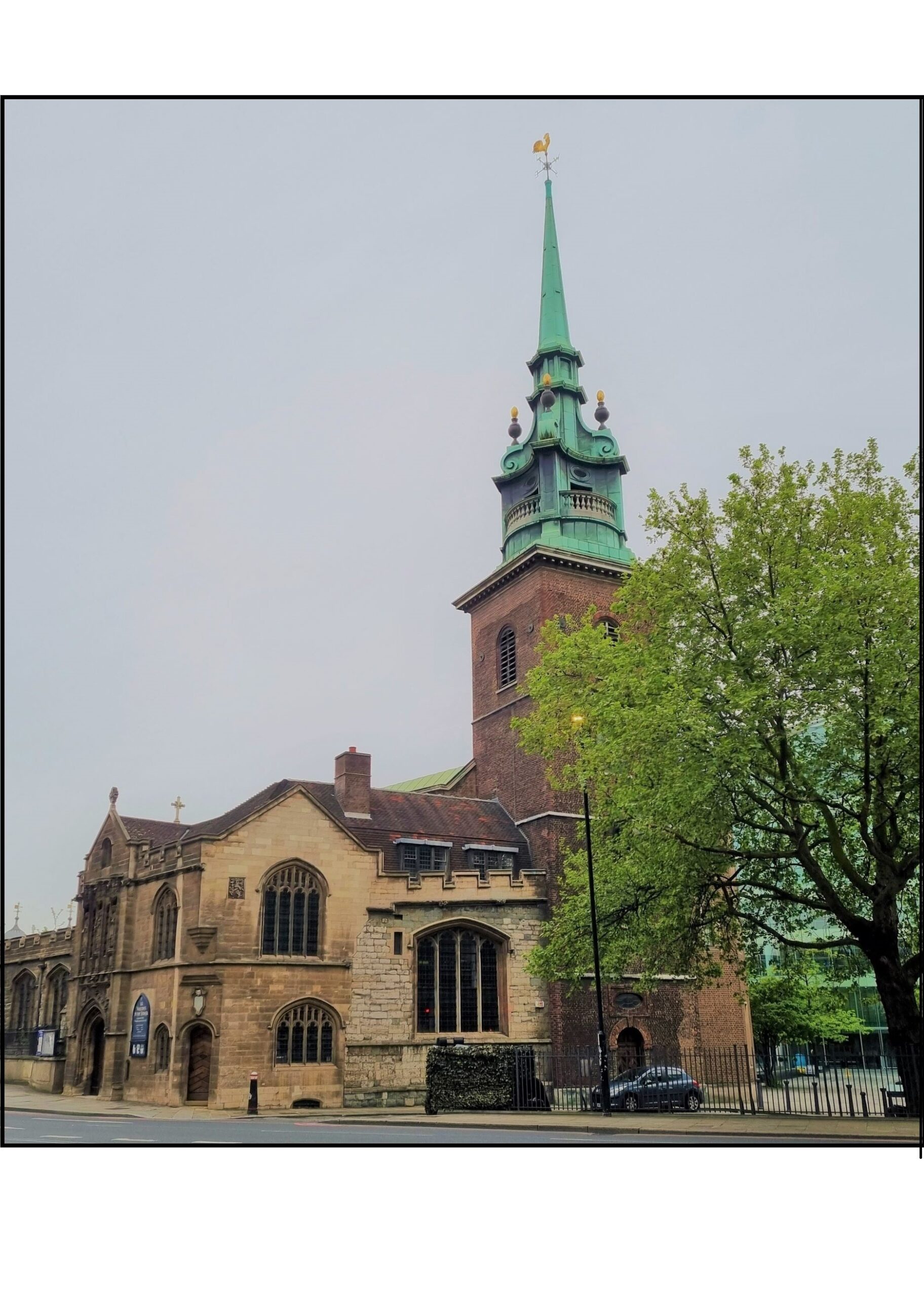
← The almost mad hotchpotch of architectural styles that make up All Hallows Barking – even the ‘Wren-like’ spire isn’t Wren at all but a fanciful 1950s creation – goes some way to justifying its name.
Technique 6: Make clear your establishment is better than the competition
Don’t give directions, just broadcast your superiority. St. Bartholomew the Great has some justification, being the remnants of a former medieval friary containing spectacular Norman architecture. It also has the advantage of controlling its immediate neighbour, originally the chapel for the hospital the friary’s founder also established. The chapel thus submitted meekly to being called St. Bartholomew the Less even though the two churches celebrate the same saint. St. Mary Aldermary took a slightly different route, its name emphasising that it is the oldest (‘alder’) and therefore – by implication – most senior church dedicated to St. Mary in the square mile. This was a clever ploy, given 15 further churches were subsequently also dedicated to Mary, including the two on hills.
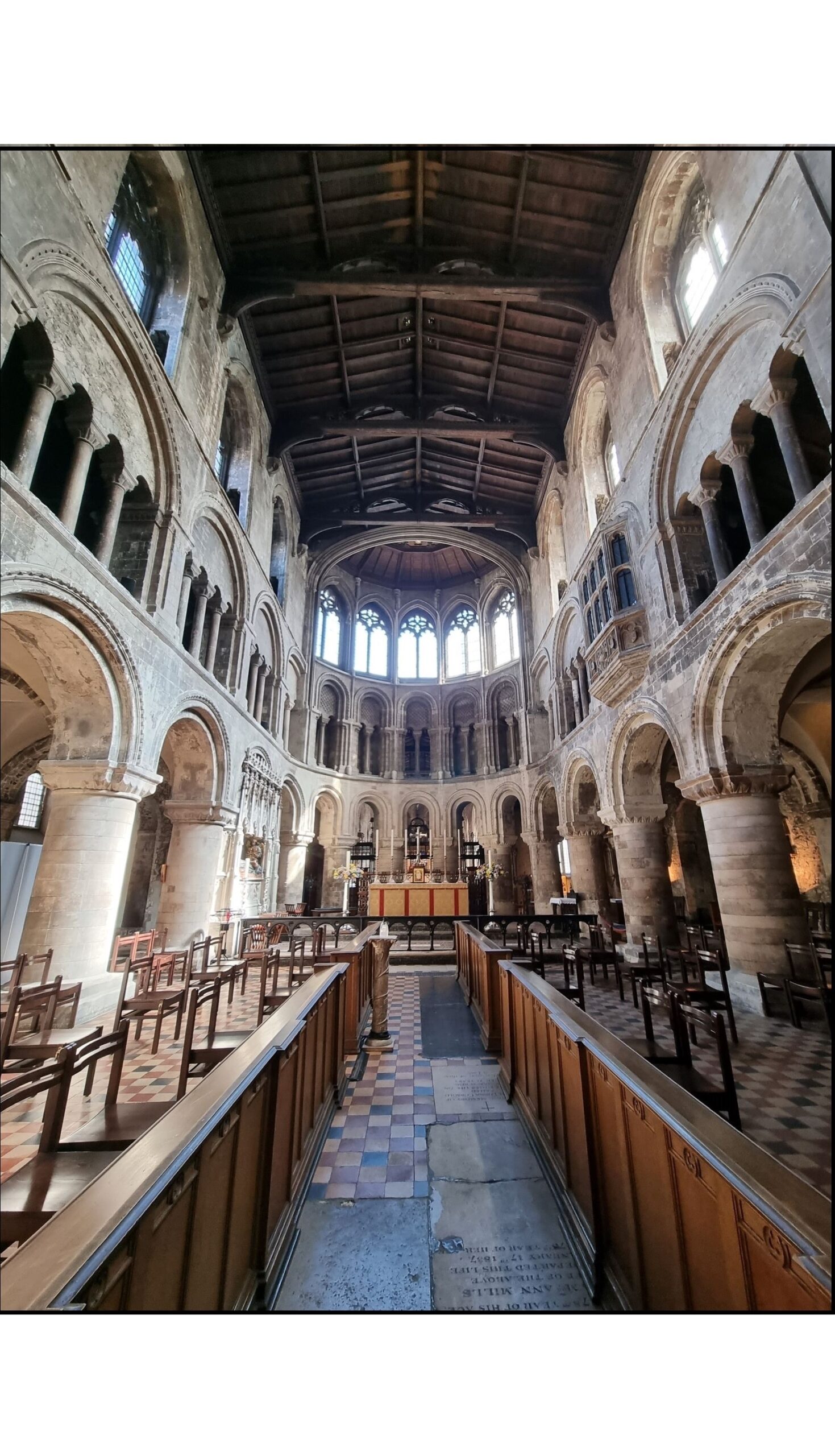
← The surviving Norman architecture of St. Bartholomew is undeniably great. I’d go so far as to suggest ‘St. Bartholomew the Stunning’, which might bring in more visitors. They would not be disappointed.
Technique 7: Appeal to both linguistic pedants and the hoi polloi
Anglo-Saxon peasants clearly couldn’t cope with the linguistic challenge of St. Vedast, a name brought over with Flemish wine merchants and attached to a church near St Paul’s. The name was corrupted over the years to St Foster, until some educated type decided to take the church back to its roots, with a curiously appended alias to avoid confusing the locals. St. Vedast-alias-Foster it remains to this day. Ironically, in the saint’s home region his name has been shortened to the much simpler St. Vaast. There is only one other church dedicated to him in the United Kingdom, but this is what comes of simply being a nice bloke who happened to be Bishop of Arras in the 7th century.
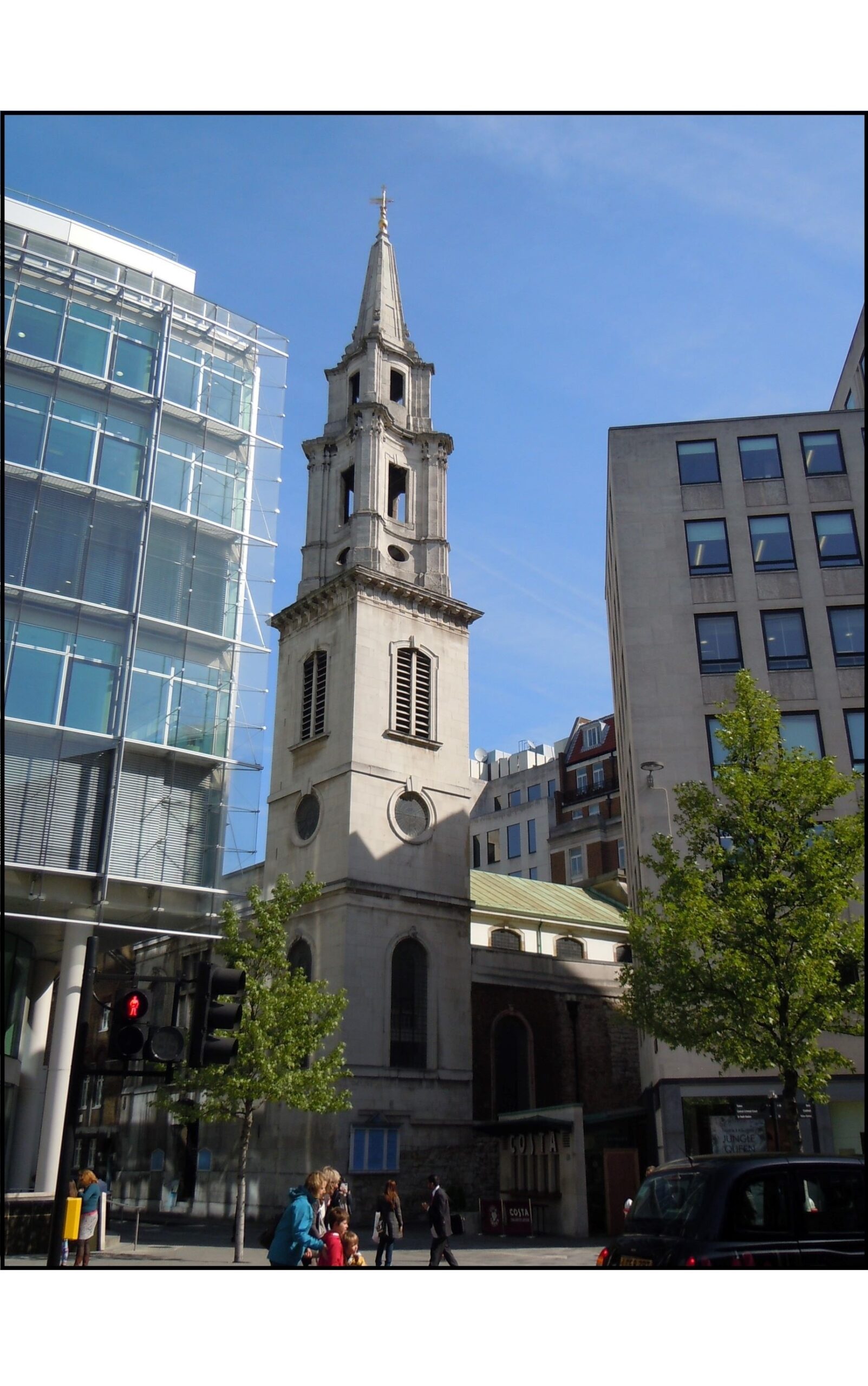
→ The alias is surely redundant now, so perhaps seeking inspiration from the eclectic mix of artefacts in the tiny churchyard is the way to go. ‘St Vedast Eclectic Artefacts’ has a certain style to it. Or perhaps not.
Technique 8: Use one of your own architectural features or treasures
St. Mary-le-Bow is named after the arches (‘bows’) in its crypt, although initially it was known as New Church because St. Mary Aldermary had already played its clever ‘seniority’ gambit (see above).
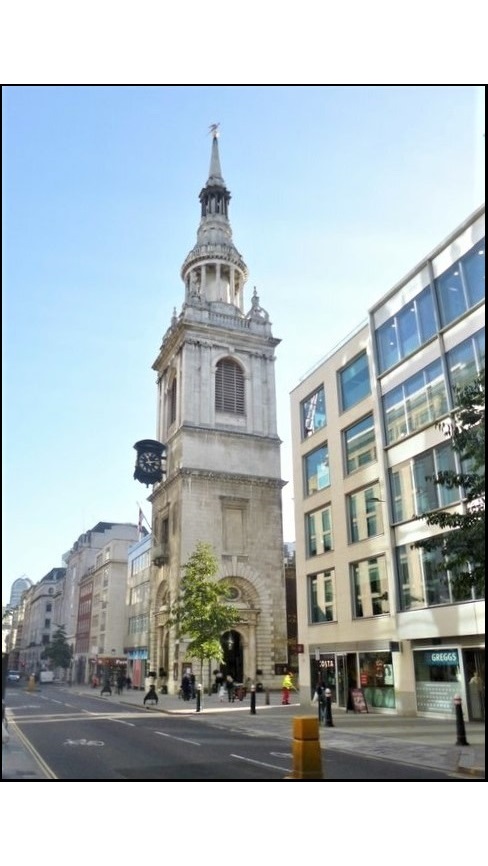
← St. Mary-le-Bow is really too famous to be renamed, which is a shame as I had ‘St. Mary Cockney Chimes’, ‘St. Mary Citrus Fruit’ and ‘St. Mary Pantomime’ lined up, referencing the qualification for calling yourself a cockney, the nursery rhyme ‘Oranges and Lemons’ and Dick Whittington ‘turning again’ at Highgate respectively, all of which feature the bells of this church.
St. Mary Axe (demolished c.1570) was supposedly named after an axe held at the church, allegedly used by Atilla the Hun to behead 11,000 English virgins defending their honour in the lower Rhineland. Quite what 11,000 English virgins were doing in the lower Rhineland when it was clearly a perilous warzone is never adequately explained; neither is how Mr. the Hun’s axe made its way to the square mile.
Technique 9: Lose the origins of your weird name in the mists of time …
… as happened at St. Dionis Backchurch (demolished 1878). ‘Backchurch’ could come from its position behind another building, a local cleric called Bac, or Bacchus, the Roman – and hence extremely heathen – god of wine. Take your pick. See also how this church cleverly combines the ‘mists of time’ ploy, admittedly a long-term strategy, with technique 10 below: One reference book claims matter-of-factly that the saint in question is St. Dionysius the Areopagite, which doesn’t help anyone, although apparently this might make him the St. Denis who became patron saint of France after being executed by the Romans in the 3rd century.
St. Martin Outwich sounds like it was named after an inside-out sandwich, and that’s as good a guess as any. A rebuild in 1403 financed by Nicholas, William and John de Oteswich is probably a red herring – as likely as not those no-doubt fine and upstanding gentlemen had taken their name from the parish, not vice versa.
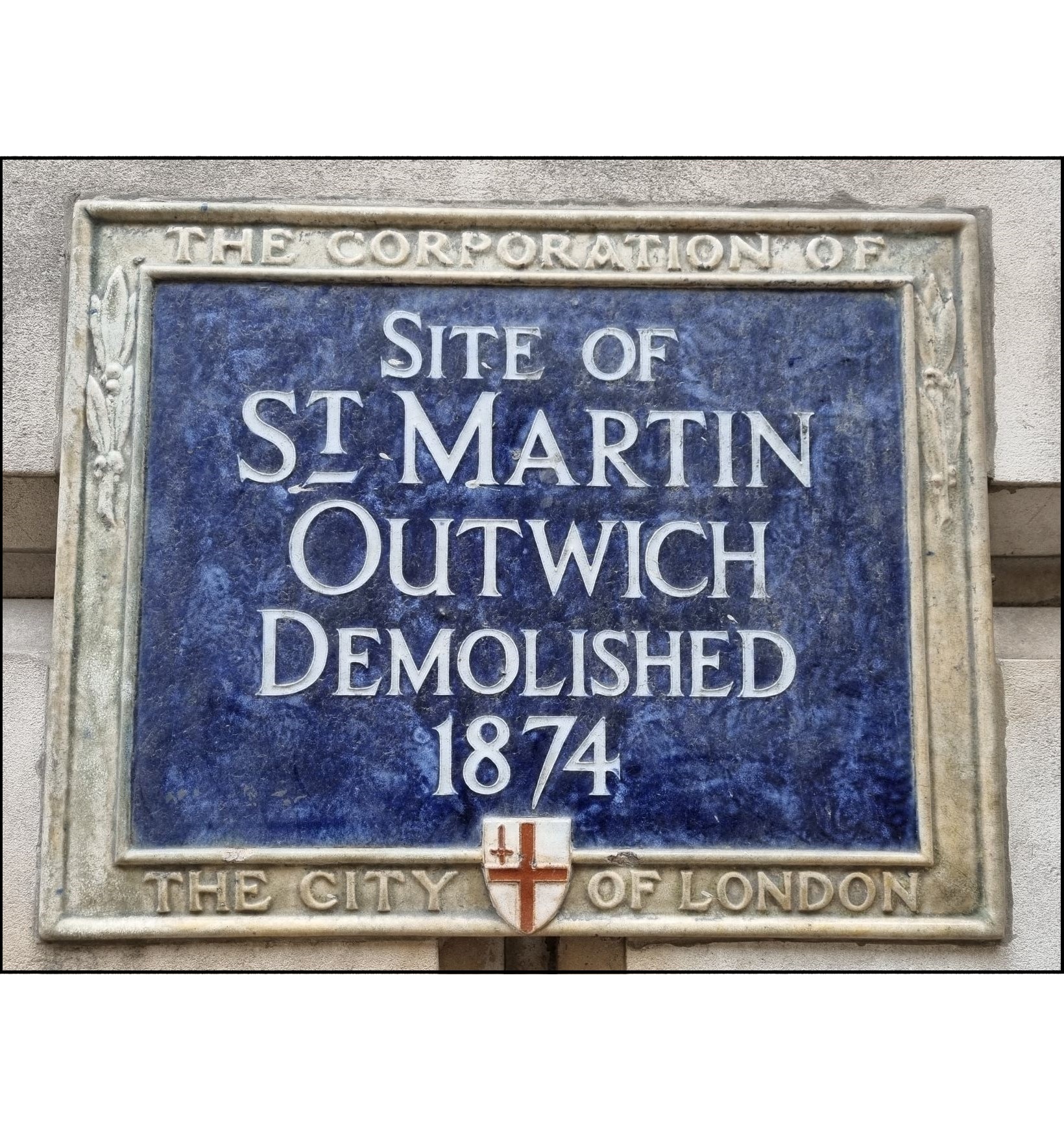
Given its congregation included such people as Mrs. Abigail Vaughan, who left in her will four shillings a year to buy bundles of twigs with which to burn heretics, it is probably just as well that it was consigned to history by the Victorians.
Technique 10: Pick an obscure Saint
For obscurity you can’t beat St. Ewin, also known as St. Andoem, St. Audoen, St. Audewin, St. Audowen, St. Edwin, St. Ewen, St. Ewenna, St. Iweyne, St. Iwyn, St. Ouen, St. Owan, St. Owen, St. Owyn or St. Yeuan, depending on who was wielding the quill pen that day. The parishioners must have been puzzled over which saint it was they were praying to, and probably yearned for the certainty offered in this respect by Christ Church Greyfriars – no wonder St. Ewin met the same fate, at the same time, as the nearby St. Nicholas Shambles discussed above. These days it is generally acknowledged that the virtuous man in question was St. Ouen, the saint to which the cathedral church at Rouen is dedicated.
An even better strategy is to use a fictional saint’s name, although St. Sepulchre without Newgate appears to be the result of an administrative cock-up rather than deliberate obfuscation. ‘Without Newgate’ is simple enough, meaning ‘outside of the new gate in the London wall’, but there is no saint called Sepulchre, and churches featuring the word are usually called ‘Holy Sepulchre’ after the original in Jerusalem.
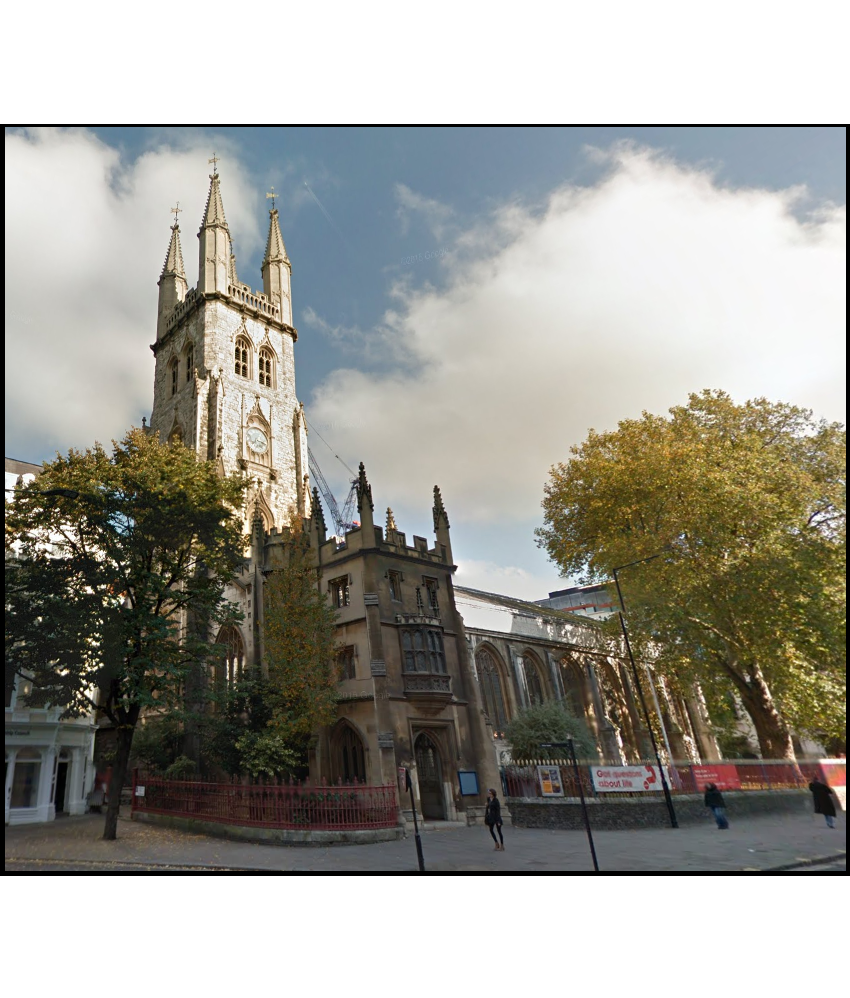
→ Attempts made to rename St. Sepulchre-without-Newgate ‘Holy Sepulchre London’ have not been successful, at least officially.
Although the ‘new gate’ no longer exists, the Old Bailey is close by on the site of Newgate Prison, and I think ‘Holy Sepulchre Old Bailey’ has a pleasantly lyrical ring.
Finally St. Alphege, an Archbishop of Canterbury killed by Vikings in 1012, has slipped into obscurity just as the church dedicated to him has slipped into ruin – you can see it near Salters Hall on London Wall. Partly demolished in 1923, the tower was left standing, only to be gutted in the Blitz. The ruins were then hidden by a particularly insensitive office development. A recent redevelopment has proved to be a tad more sympathetic to poor St. Alphege and his ruins, even if no-one these days has a clue who he was.
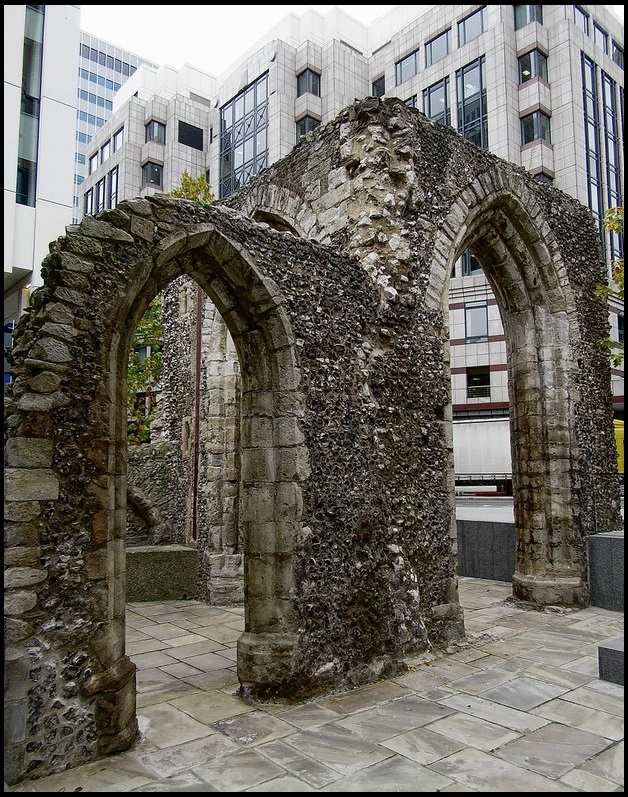
Nearest Stations:
Credits:
Selected Bibliography: